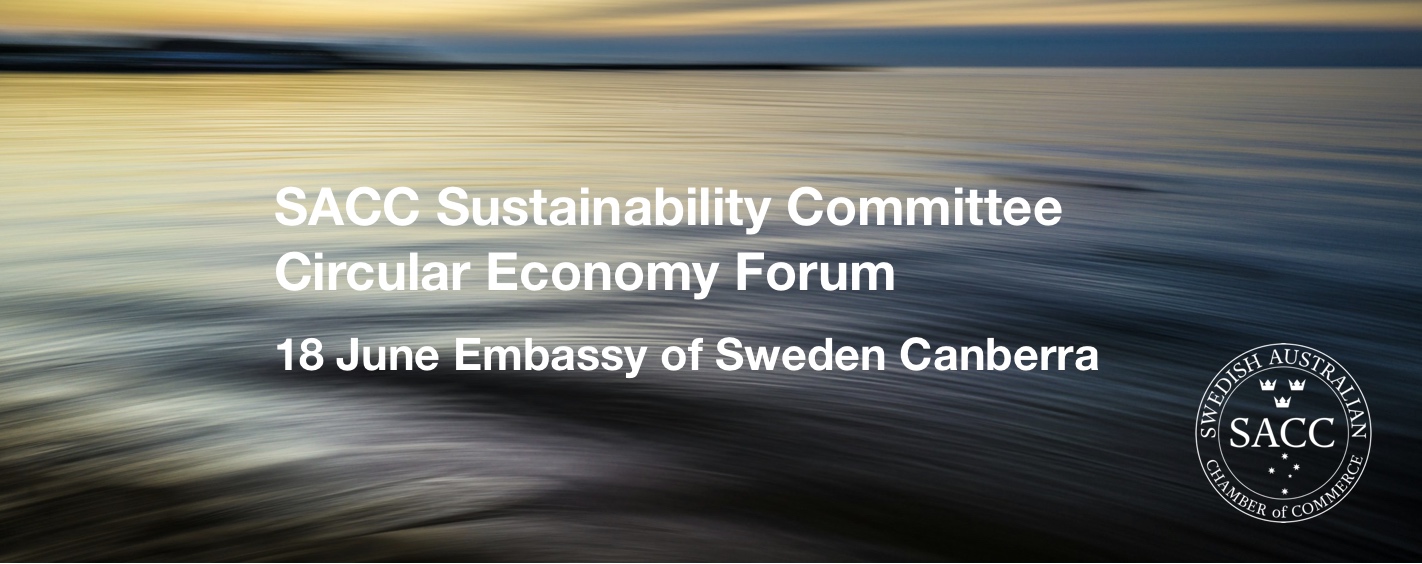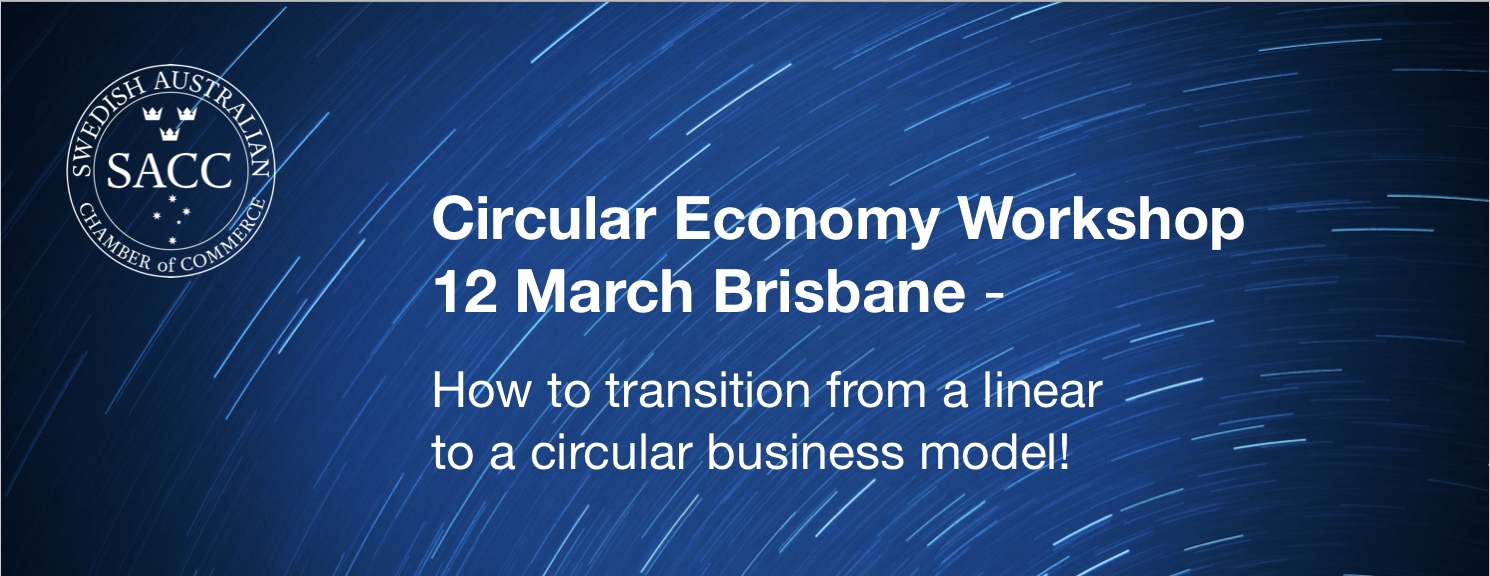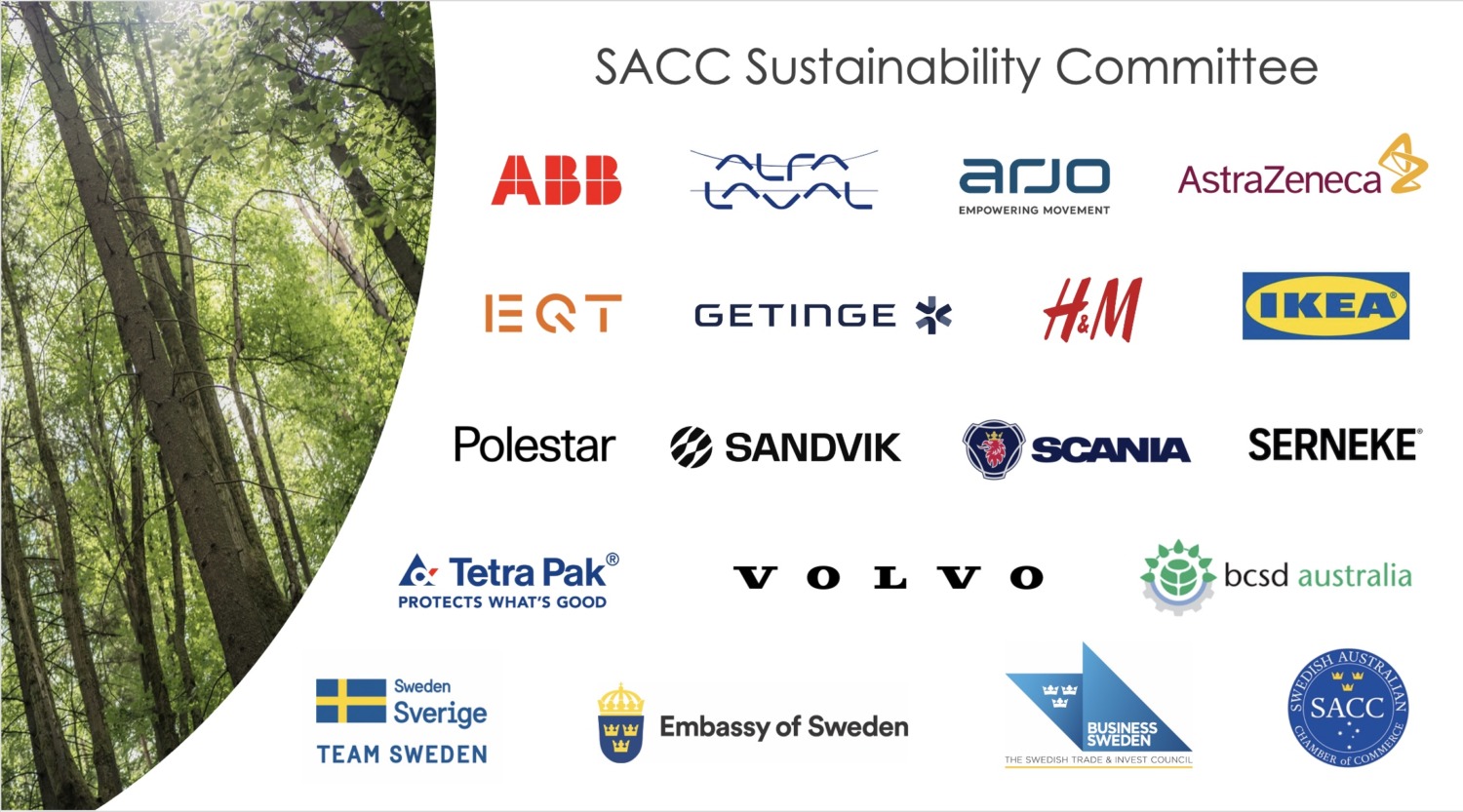SACC Sustainability Committee Update

Australia has committed to progressing towards a circular economy, with a target to achieve an 80 per cent resource recovery from all waste streams by 2030. This target will only be achieved through meaningful collaborations between businesses across multiple sectors and policy makers.
The Swedish Chamber of Commerce’s Sustainability Committee was set up in 2022 to bring together Swedish companies that are committed to the Sustainable Development Agenda through actions and contributions.
On June 18th, together with the Embassy of Sweden Canberra, the committee will be hosting an event with government and industry players on how member companies are leading the charge through innovation, solutions and industry initiatives, plus discuss the barriers they face in making a bigger impact and achieving the collection ambitions that will also help support government agenda.
Currently, we have these member companies who have expressed interest in participating in the event – Alfa Laval, AstraZeneca, IKEA, Sandvik and Tetra Pak. Please contact us for more information: sacc@swedishchamber.com.au
Previous event:

On 12 March the Sustainability Committee together with the SACC Brisbane Chapter organised an insightful Circular Economy Workshop at the Sandvik office.
The event started with a welcome from San
dvik Australia Managing Director Wayne Scrivens and an intro from Teresia Fors, SACC Vice President and Chair SACC QLD Chapter. Dr Nicole T Garofano, Head of Circular Economy Development Planet Ark Environmental Foundation gave us an introduction to Circular Economy for businesses followed by a workshop, led by Circular Economy Specialist Linda Nordin, on how to transition your business models from linear to circular and how this aligns with the upcoming ISO standard for CE.
Why is the transition crucial?
- It reduces the pressure on finite resources, helping to conserve them for future generations.
- It minimizes waste generation and pollution, leading to a cleaner environment and healthier ecosystems.
- It promotes innovation and economic growth by creating new business models, products, and services that are more sustainable and resource-efficient.
5 step process to implement circular economy (CE) in your business
- Define a baseline and create targets
- Embed CE in your vision and strategy
- Align business model with CE ISO standard 59010
- Undertake feasibility studies, priorities
- Evaluate and improve
After the workshop there was a thought-provoking panel discussion, featuring below panellists, who shared key initiatives, opportunities and challenges switching to circular today;
- Dr Nicole T Garofano, Head of Circular Economy Development Planet Ark Environmental Foundation
- Catherine Hill, Senior Investment Advisor for Circular Economy – Europe Desk at Australian Trade and Investment Commission (Austrade)
- Lauren Pulitano, Vice President of Public Affairs at Volvo Group Australia
- Brittany Wappett, Sustainability Advisor at Sandvik
The event concluded with a brief presentation of the SACC Sustainability Committee, its members and focus here in Australia by SACC General Manager, Camilla Jennings.
At the event participants had the opportunity to:
- Discover the 10 steps to transition your business models from linear to circular and learn how this aligns with the upcoming ISO standard for CE (anticipated release in early 2024).
- Engage in discussions and activities with fellow participants to kickstart your Circular journey.
- Explore real-world examples of how businesses are implementing circularity today, services and products.
- Network with like-minded people
The Circular Economy Workshop format was a great success and the SACC Sustainability Committee aims to bring this workshop to other SACC Chapters as well, including Sydney and Melbourne.


